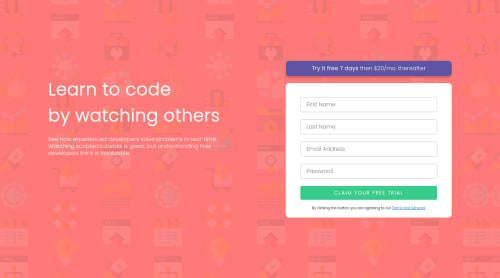HTML, CSS and JavaScript

Solution retrospective
Can you rate this work, please?
Please log in to post a comment
Log in with GitHubCommunity feedback
- P@dwhenson
Hi @Ahmed0107 nice job here. 🙌
With regards the mobile layout, I would suggest setting the height of the body element as
min-height: 100vhand then moving some of the styles from your first wrapper to the body (such as the background image/color etc).If you then, add the flex settings you have on the wrapper to the body this should then position the wrapper, and everything inside it, at the center of the viewport at all resolutions. At the moment it's not working on mobile views.
You can probably then do away with the container inside the wrapper and just set a max-width on the wrapper div. Hopefully this should keep things centered. I'd avoid specifying heights on anything if possible, and only a min-height if you really have to.
Getting things laid out in the center of the screen is tricky, but as it will come up again and again in these challenges it's worth spending a bit of time to find an approach that works for you.
Cheers 👋
Dave
Marked as helpful - @ConradMcGrifter
its pretty decent. I would rate it 7.5/10
- I think you need to fix the layout on mobile
- on desktop at larger resolutions your design is stretching so try putting a max width on your
divcontainer - I think you need to validate the password better because currently you can enter just 1 character and it will accept it. maybe put a length requirement
Marked as helpful
Join our Discord community
Join thousands of Frontend Mentor community members taking the challenges, sharing resources, helping each other, and chatting about all things front-end!
Join our Discord